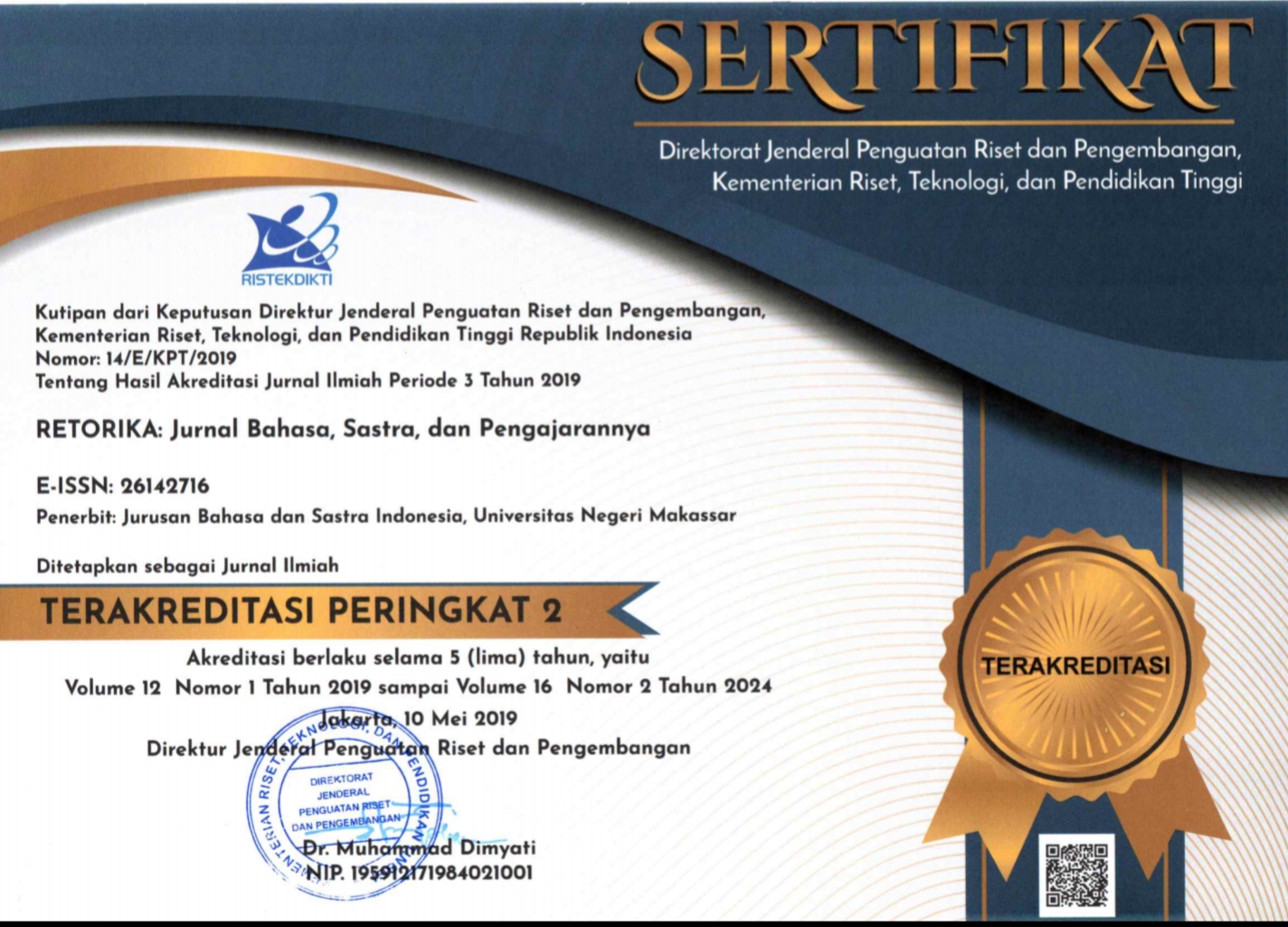THE METAPHOR OF ACEH LANGUAGE ON INSTAGRAM SOCIAL MEDIA: POTENTIAL AND THREATS OF HATE SPEECH IN THE PUBLIC SPACE
(1) Universitas Malikussaleh
(2) Akademi Komunitas Negeri Aceh Barat, Komplek STTU Alue Peunyareng, Ujong Tanoh Darat, Meureubo, Kabupaten Aceh Barat, Aceh 23615, Indonesia
(3) Akademi Komunitas Negeri Aceh Barat, Komplek STTU Alue Peunyareng, Ujong Tanoh Darat, Meureubo, Kabupaten Aceh Barat, Aceh 23615, Indonesia
(4) Department of Bahasa Indonesia Education, Faculty of Teacher Training and Education, Universitas Syiah Kuala, Jalan Tgk. Hasan Krueng Kalee, Darussalam, Banda Aceh 23111, Indonesia
(5) Department of Bahasa Indonesia Education, Faculty of Teacher Training and Education, Universitas Samudra, Jalan, Prof. Dr. Syarief Thayeb, Meurandeh, Langsa Lama, Langsa City, Aceh 24416
(6) Department of Mechanical engineering, Politeknik Negeri Lhokseumawe, Jalan. Banda Aceh-Medan Km. 280,3, Buketrata Mesjid Punteut, Blang Mangat, Lhokseumawe 24301, Indonesia
(*) Corresponding Author
DOI: https://doi.org/10.26858/retorika.v15i1.23694
Abstract
Keywords
Full Text:
PDFReferences
nam, M. C., & Hafiz, M. (2015). Surat Edaran Kapolri Tentang Penanganan Ujaran Kebencian (Hate Speech) dalam Kerangka Hak Asasi Manusia. JURNAL KEAMANAN NASIONAL, 1(3), 341–361.
Ashar, S. (2020, November 1). Pidana di UU ITE efektif menjerat pengguna Medsos, hingga Oktober ada 324 kasus. Kontan. Retrieved from https://nasional.kontan.co.id/news/pidana-di-uu-ite-efektif-menjerat-pengguna-medsos-hingga-oktober-ada-324-kasus
Brown, A. (2017). What is hate speech? Part 1: The Myth of Hate. Law and Philosophy, 36(4), 419–468. https://doi.org/10.1007/s10982-017-9297-1
Citraresmana, E. (2010). Metafora Orientasional Kata Break Bahasa Inggris: Satu Ancangan Semantik Kognitif. In Jurnal Seminar Internasional Unpad- UKM 7.
Cornish, F. (2013). On the dual nature of the Functional Discourse Grammar model: context, the language system/language use distinction, and indexical reference in discourse. Language Sciences, 38, 83–98. https://doi.org/https://doi.org/10.1016/j.langsci.2013.02.001
de Seta, G. (2019). Digital Folklore BT - Second International Handbook of Internet Research. In J. Hunsinger, L. Klastrup, & M. M. Allen (Eds.) (pp. 1–17). Dordrecht: Springer Netherlands. https://doi.org/10.1007/978-94-024-1202-4_36-2
Effendi, E. (2020). Penafsiran Ujaran Kebencian dalam Hukum Pidana Indonesia Berdasarkan Beberapa Putusan Pengadilan. Riau Law Journal, 4(1), 23–38.
Hairi, P. J. (2019). Penanggulangan Tindak Pidana Terkait Ujaran Kebencian. Info Singkat, 1–6. Retrieved from https://berkas.dpr.go.id/puslit/files/info_singkat/Info Singkat-XI-3-I-P3DI-Februari-2019-240.pdf
Haula, B., & Nur, T. (2019). Konseptualisasi Metafora Dalam Rubrik Opini Kompas: Kajian Semantik Kognitif. RETORIKA: Jurnal Bahasa, Sastra, Dan Pengajarannya, 12(1), 25. https://doi.org/10.26858/retorika.v12i1.7375
Ignatow, G. (2004). Speaking Together, Thinking Together? Exploring Metaphor and Cognition in a Shipyard Union Dispute. Sociological Forum, 19(3), 405–433. https://doi.org/10.1023/B:SOFO.0000042555.15713.4d
Kamalludin, I., & Arief, B. N. (2019). Kebijakan Formulasi Hukum Pidana Tentang Penanggulangan Tindak Pidana Penyebaran Ujaran Kebencian (Hate Speech) Di Dunia Maya. Law Reform, 15(1), 113. https://doi.org/10.14710/lr.v15i1.23358
Keraf, G. (2009). Diksi dan Gaya Bahasa [Diction and Language Style]. Jakarta: Gramedia Pustaka Utama.
Kövecses, Z. (2010). Metaphor: A practical introduction Second Edition. New York: Oxford University Press.
Kövecses, Zoltán. (2017). Context in Cultural Linguistics: The Case of Metaphor BT - Advances in Cultural Linguistics. In F. Sharifian (Ed.) (pp. 307–323). Singapore: Springer Singapore. https://doi.org/10.1007/978-981-10-4056-6_14
Maharani, T. (2021). Virtual Police Telah Kirim Peringatan ke 89 Akun Media Sosial. Kompas. Retrieved from https://nasional.kompas.com/read/2021/03/12/17320661/virtual-police-telah-kirim-peringatan-ke-89-akun-media-sosial
Marliana, A., Anshari, & Amir, J. (2021). Meaning of Local Language Expression of Pasang Ri Kajang and Its Implication for Language Teaching. International Journal of Language Education, 5(1), 569. https://doi.org/10.26858/ijole.v5i1.12796
Muhlisin, M. (2019). Story of Dajjal dan Ya’juj Ma’juj: Menyingkap Tanda-Tanda Kemunculan Dajjal dan Kaki Tangannya. Bantul: Araska.
Musolff, A. (2017). Metaphor and Cultural Cognition BT - Advances in Cultural Linguistics. In F. Sharifian (Ed.) (pp. 325–344). Singapore: Springer Singapore. https://doi.org/10.1007/978-981-10-4056-6_15
Ningrum, D. J., Suryadi, & Wardhana, D. E. C. (2018). Kajian Ujaran Kebencian di Media Sosial. Jurnal Ilmiah Korpus, 2(2), 241–252.
Peyton, M. R., & Jalongo, M. R. (2008). Make Me an Instrument of Your Peace: Honoring Religious Diversity and Modeling Respect for Faiths Through Children’s Literature. Early Childhood Education Journal, 35(4), 301–303. https://doi.org/10.1007/s10643-007-0231-2
Prihatiningsih, W. (2017). Motif Penggunaan Media Sosial Instagram di Kalangan Remaja. Communication, 8(1), 51–65.
Ray, S. A. (2019). Analisis Jenis-jenis Metafora Dalam Surat Kabar: Kajian Semantik [Analysis of Types of Metaphor Types in Letters: Semantic Studies]. Jurnal Pendidikan Bahasa Dan Sastra Indonesia, 3(2), 146–150. Retrieved from https://journal.unnes.ac.id/sju/index.php/jpbsi/article/view/20226
Sugiarto, S., & Qurratulaini, R. (2020). Potensi Kriminal Cyber Crime pada Meme: Sebuah Kajian Linguistik Forensik. Deiksis: Jurnal Pendidikan Bahasa Dan Sastra Indonesia, 7(1), 46–57.
Tafesse, W., & Wood, B. P. (2021). Followers’ engagement with instagram influencers: The role of influencers’ content and engagement strategy. Journal of Retailing and Consumer Services, 58(September 2020), 102303. https://doi.org/10.1016/j.jretconser.2020.102303
Tay, D. (2014). An Analysis of Metaphor Hedging in Psychotherapeutic Talk BT - Approaches to Language, Culture, and Cognition: The Intersection of Cognitive Linguistics and Linguistic Anthropology. In M. Yamaguchi, D. Tay, & B. Blount (Eds.) (pp. 251–267). London: Palgrave Macmillan UK. https://doi.org/10.1057/9781137274823_11
Usman, J. (2017). Metaphors in the Ex-Gam’S Political Discourses During Pre-Public Elections in Aceh. Englisia Journal, 4(2), 116. https://doi.org/10.22373/ej.v4i2.1667
Yusuf, Y. Q., Natsir, Y., & Yusra, S. R. (2016). Dont 4get 2 txt me plz! Linguistic and discoursal features of short message service by female texters. 3L: Language, Linguistics, Literature, 22(1), 81–96.
Zaimar, O. K. S. (2002). Majas dan Pembentukannya. Makara, Sosial Humaniora, 6(2), 45–57.
Article Metrics
Abstract view : 933 times | PDF view : 350 timesRefbacks
- There are currently no refbacks.
Copyright (c) 2022 Rahmad Nuthihar, Riza Hasan, RN Herman, Azrul Rizki, Wahdaniah Wahdaniah

This work is licensed under a Creative Commons Attribution-NonCommercial 4.0 International License.
Published by:
Department of Indonesian Language, Faculty of Languages and Literature, Universitas Negeri Makassar in cooperate with Asosiasi Dosen Bahasa dan Sastra Indonesia (ADOBSI) and Ikatan Program Studi Pendidikan Bahasa dan Sastra Indonesia (IKAPROBSI).
Address: Department of Indonesian Language Office, DG Building Second Floor, UNM Parangtambung, Daeng Tata Raya Street, Makassar, South Sulawesi, Indonesia
 Email: retorika@unm.ac.id
Email: retorika@unm.ac.id

RETORIKA: Jurnal Bahasa, Sastra,dan Pengajarannya is licensed under a Creative Commons Attribution-NonCommercial 4.0 International License.

















